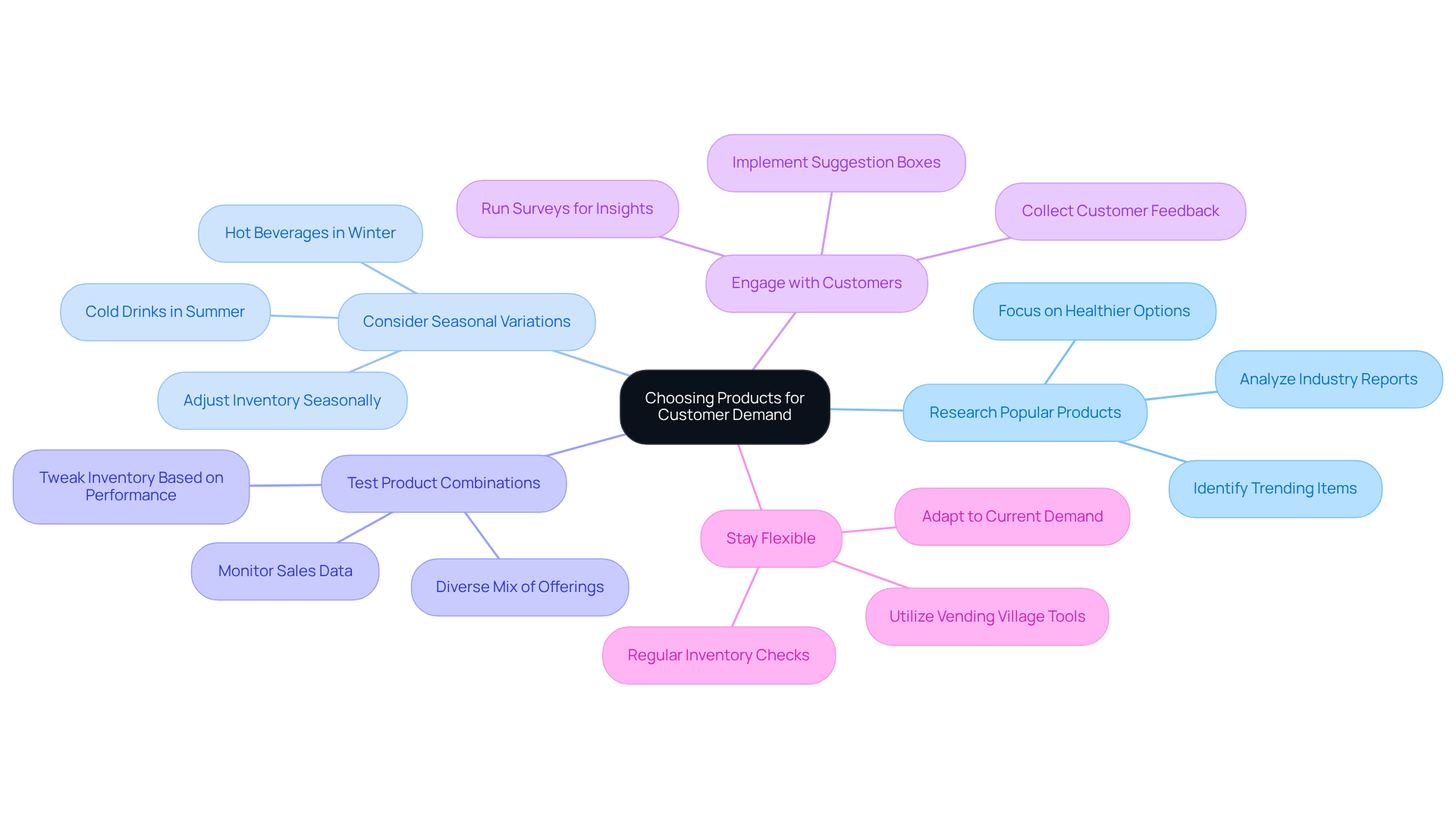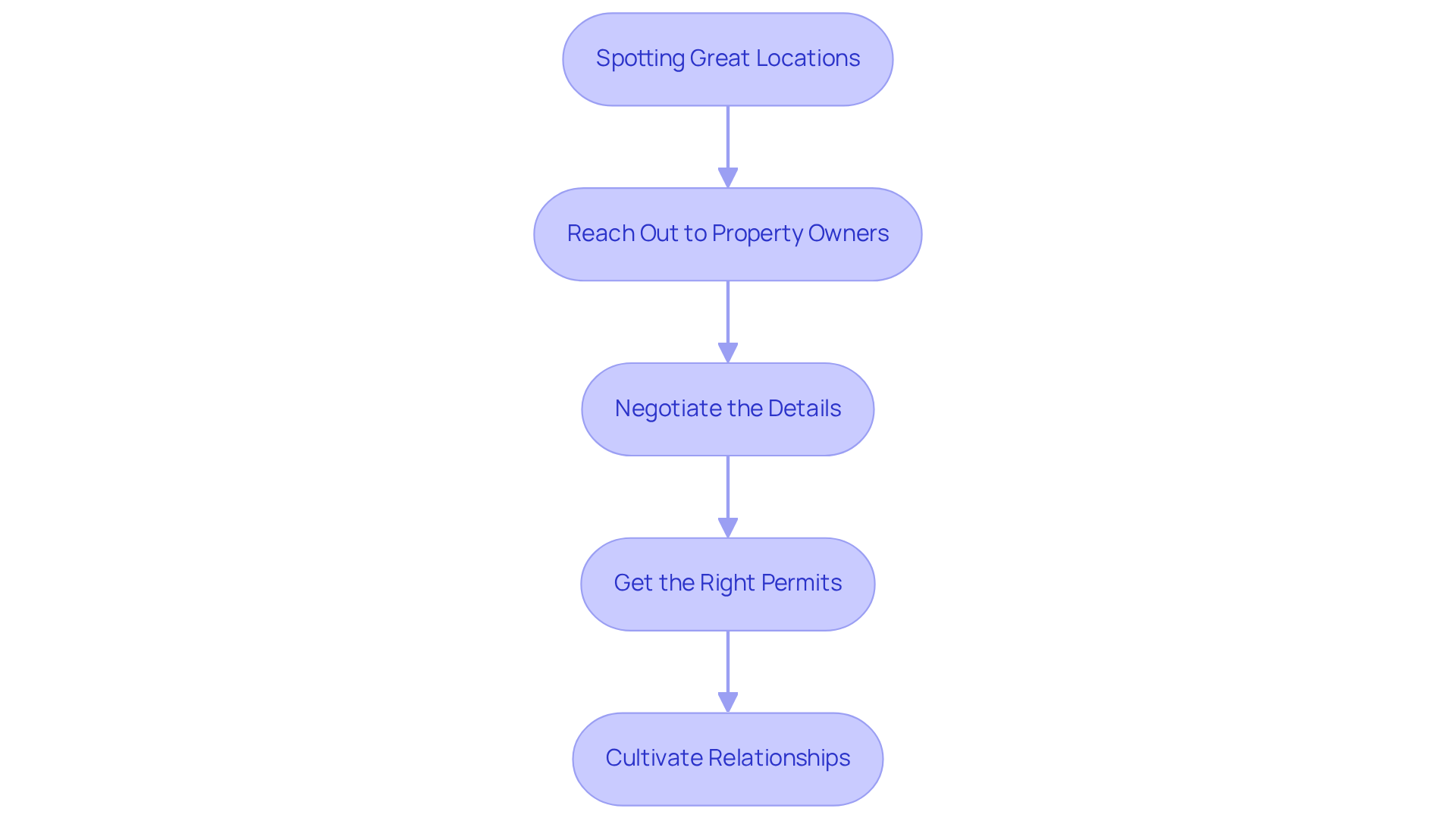Overview
Starting a vending machine business? It’s all about doing your homework first. You need to dive into market research, pick products that people actually want, find great locations, and come up with some clever marketing strategies.
Here’s the thing: defining your target market is key. Who are you selling to? Take a good look at your competitors, too. What are they doing right? And don’t forget to keep an eye on the latest trends. Staying updated can really give you an edge in this competitive game.
So, what’s the next step? Just take it one piece at a time, and you’ll be on your way to success in no time!
Introduction
Thinking about starting a vending machine business? It can actually be a pretty profitable venture, but it’s not without its challenges. You’ll want to plan carefully and execute strategically.
By getting a good grasp of market dynamics and figuring out what customers really want, you can make smart choices about where to place your machines. This industry is growing and changing with consumer trends, so there’s a lot of potential.
But here’s the thing: the vending landscape is getting more competitive every day. So, how do you make your business stand out and thrive? This guide will walk you through some essential steps and insights that can help you navigate the ups and downs of launching and running a successful vending machine enterprise.
Conduct Market Research to Identify Opportunities
-
Define Your Target Market: Let’s kick things off by figuring out who your potential customers are. Are they office workers, students, or maybe gym-goers? Knowing your audience is key to tailoring what you offer.
-
Analyze Competitors: Next, take a look at the vending machine businesses already in your area. What products are they selling? Where are they located? This little detective work will help you identify market gaps relevant for starting a vending machine business.
-
Evaluate Site Viability: Now, let’s talk about where to place your machines. Use foot traffic data and demographic info to evaluate potential spots. High-traffic areas like schools, hospitals, and office buildings are excellent for starting a vending machine business that focuses on snack dispensers. To really nail down the value of your site, think about daily foot traffic, hours of operation, and the type of neighborhood.
-
Survey Potential Customers: Have you thought about asking your potential customers what they want? Conducting surveys or just chatting with people can give you great insights into what products they’d love to see in your kiosks when starting a vending machine business. This direct feedback can really guide your product selection.
-
Stay Updated on Trends: Keep your finger on the pulse of industry trends. For instance, there’s a growing demand for healthier snacks and cashless payment options. Market research reports can be goldmines for data to shape your strategy. Plus, don’t forget the importance of a secure marketplace for both dispenser and location owners — it can really boost your business's credibility and promote ethical practices in the field.

Choose Products That Meet Customer Demand
-
Researching popular products is crucial for anyone starting a vending machine business, as it helps identify what’s trending in automated retail. By 2025, healthier snacks, drinks, and convenience items are really taking off, showing that people are leaning more towards nutritious options. Did you know that healthier snacks made up 7.90% of items sold through automated dispensers back in 2019? Dive into industry reports to find the best-sellers and new products that appeal to health-conscious consumers.
-
Consider Seasonal Variations: Think about how seasons affect what people want to buy. For example, cold drinks usually see a sales boost in the summer, while hot beverages are in demand during winter. Understanding these patterns can really help you boost your sales when it comes to starting a vending machine business.
-
Test Product Combinations: Start with a diverse mix of snacks, drinks, and healthy options. Keep an eye on your sales data to see which items are performing well. This way, you can tweak your inventory based on what’s actually selling.
-
Engage with Customers: Don’t shy away from asking for customer feedback. Setting up a suggestion box on your snack machine or running occasional surveys can provide great insights into consumer preferences, which is essential when starting a vending machine business. As industry experts point out, understanding consumer behavior is key to meeting the demand for convenience and personalized experiences in automated retail.
-
Stay Flexible: It’s important to stay agile with your product offerings. Regularly check your inventory to make sure it meets current demand. This will help you optimize your vending operations. Plus, consider using tools from Vending Village, like their value calculator and guides for buyers and vendors, to support your decision-making process.

Secure Locations for Your Vending Machines
-
Spotting Great Locations: Think about where people gather—schools, gyms, office buildings, and hospitals. These spots usually have a steady stream of potential clients. Vending Village is here to help you find and secure these prime locations for starting a vending machine business through a dedicated marketplace that connects operators with property owners, using real-time location requests for direct outreach.
-
Reach Out to Property Owners: After you’ve identified some promising sites, it’s time to connect with property owners or managers. Put together a proposal that highlights the perks of having a snack dispenser on-site, like extra income and convenience for tenants. Vending Village equips agents with the right tools and support to effectively pitch opportunities for starting a vending machine business, including resources for managing your own pipeline and schedule.
-
Negotiate the Details: Let’s talk about lease terms—rental fees, duration, and maintenance responsibilities. Make sure the agreement works for both sides and clearly lays out expectations. Vending Village promotes open negotiations, so everyone knows what they’re committing to.
-
Get the Right Permits: Check what local regulations say about operating machines. You might need specific permits or licenses to run things legally in certain areas. Vending Village can guide you through the requirements for starting a vending machine business, ensuring that you remain compliant.
-
Cultivate Relationships: Build a solid rapport with property owners and managers. A good connection can lead to better collaboration and future opportunities for more sites. Vending Village stresses the importance of relationship-building, giving agents comprehensive support to nurture these connections.

Implement Effective Marketing Strategies
-
Utilize Social Media: So, you want to boost your merchandise business? Start by building a solid presence on social media. Keep your audience updated about new products, promotions, and where to find your machines. Take a page from Old Navy’s playbook with their 'Tweet for Your Feet' campaign. They nailed it by driving over 12 million impressions and 9,000 unique tweets! They even dedicated 65% of their budget to mobile tech for those Twitter vending machines. It shows that investing in digital marketing is key. Plus, don’t forget to share testimonials from Vending Village users. They can really showcase how the platform has transformed their businesses, making it easier to connect with vendors and find prime locations. That builds trust with your audience.
-
Offer Promotions: Now, let’s talk promotions. Think about running enticing offers, like discounts or loyalty programs, to keep customers coming back. For instance, Old Navy gave away 9,000 flip flops during a campaign, which drew in a ton of new customers and exceeded their sales goals. Vending Village users have found that such promotions can really boost client engagement and satisfaction.
-
Leverage Local Advertising: Don’t underestimate the power of local advertising. Get the word out through community newspapers, bulletin boards, and online platforms. Highlight your unique offerings or special promotions to grab attention. You can also emphasize Vending Village’s support for new operators in these ads, demonstrating how easy starting a vending machine business is with their help.
-
Engage with the Community: Getting involved in local events or sponsoring community activities can do wonders for your brand visibility. Building a positive reputation in the community leads to increased interest and loyalty. Share testimonials from happy Vending Village users during these interactions—they serve as powerful endorsements for your services.
-
Monitor and Adjust Marketing Efforts: Finally, don’t forget to keep an eye on your marketing strategies. Regularly evaluate what’s working and what’s not by analyzing sales data and gathering customer feedback. This helps you connect with your target audience more effectively. The experiences shared by Vending Village users can offer valuable insights into what really resonates in the vending industry, guiding you to adapt your strategies as needed.

Conclusion
Starting a vending machine business? It’s all about having a solid game plan to thrive in a competitive market. First off, really get to know your audience. Think about who they are and what they want. Then, check out what your competitors are doing and pick the best spots for your machines. This foundation is key to getting things rolling.
Now, let’s talk products. You’ve got to align what you offer with what customers actually want. It’s super important because this will directly impact your sales and how happy your customers are. Remember, thorough market research is your best friend here. Keep an eye on trending products, and don’t forget to craft effective marketing strategies that resonate.
Engaging with potential customers is also a game-changer. Staying updated on industry trends helps you stay responsive and adaptable. Plus, securing the right locations and building relationships with property owners can really boost your success.
Here’s the thing: starting a vending machine business can be tough, but it’s also super rewarding. By using market insights and putting customer preferences first, you can find your niche in this ever-evolving industry. So, what’s the next step? Take proactive actions today, and you could be on your way to running a thriving vending operation tomorrow. This way, your business won’t just meet current demands; it’ll also adapt to future consumer trends.
Frequently Asked Questions
What is the first step in conducting market research for a vending machine business?
The first step is to define your target market by identifying who your potential customers are, such as office workers, students, or gym-goers.
Why is it important to analyze competitors when starting a vending machine business?
Analyzing competitors helps you understand what products they are selling and their locations, which can reveal market gaps that you can exploit when starting your own business.
How can I evaluate the viability of a site for placing vending machines?
To evaluate site viability, use foot traffic data and demographic information to assess potential locations, focusing on high-traffic areas like schools, hospitals, and office buildings.
What should I do to gather insights from potential customers?
You should conduct surveys or engage in conversations with potential customers to gather direct feedback on what products they would like to see in your vending machines.
How can staying updated on trends benefit my vending machine business?
Staying updated on industry trends, such as the demand for healthier snacks and cashless payment options, can help shape your strategy and improve your product offerings.
What role do market research reports play in starting a vending machine business?
Market research reports provide valuable data that can inform your business strategy and help you stay competitive in the market.
Why is it important to ensure a secure marketplace for vending machine operations?
A secure marketplace boosts your business's credibility and promotes ethical practices, which can enhance trust among dispenser and location owners.
List of Sources
- Choose Products That Meet Customer Demand
- Vending Machine Industry Outlook: Trends, Data, and Future Prospects - RedRabbit (https://redrabbitvending.com/pt/vending-machine-industry-outlook-trends-data-and-future-prospects)
- Vending Machine Statistics and Facts (2025) (https://news.market.us/vending-machine-statistics)
- How to start a profitable vending machine business | VendSoft (https://vendsoft.com/vending-machine-business-guide)
- Implement Effective Marketing Strategies
- MMA Case Study Hub | Tweet for Your Feet (https://mmaglobal.com/case-study-hub/case_studies/view/31750)




